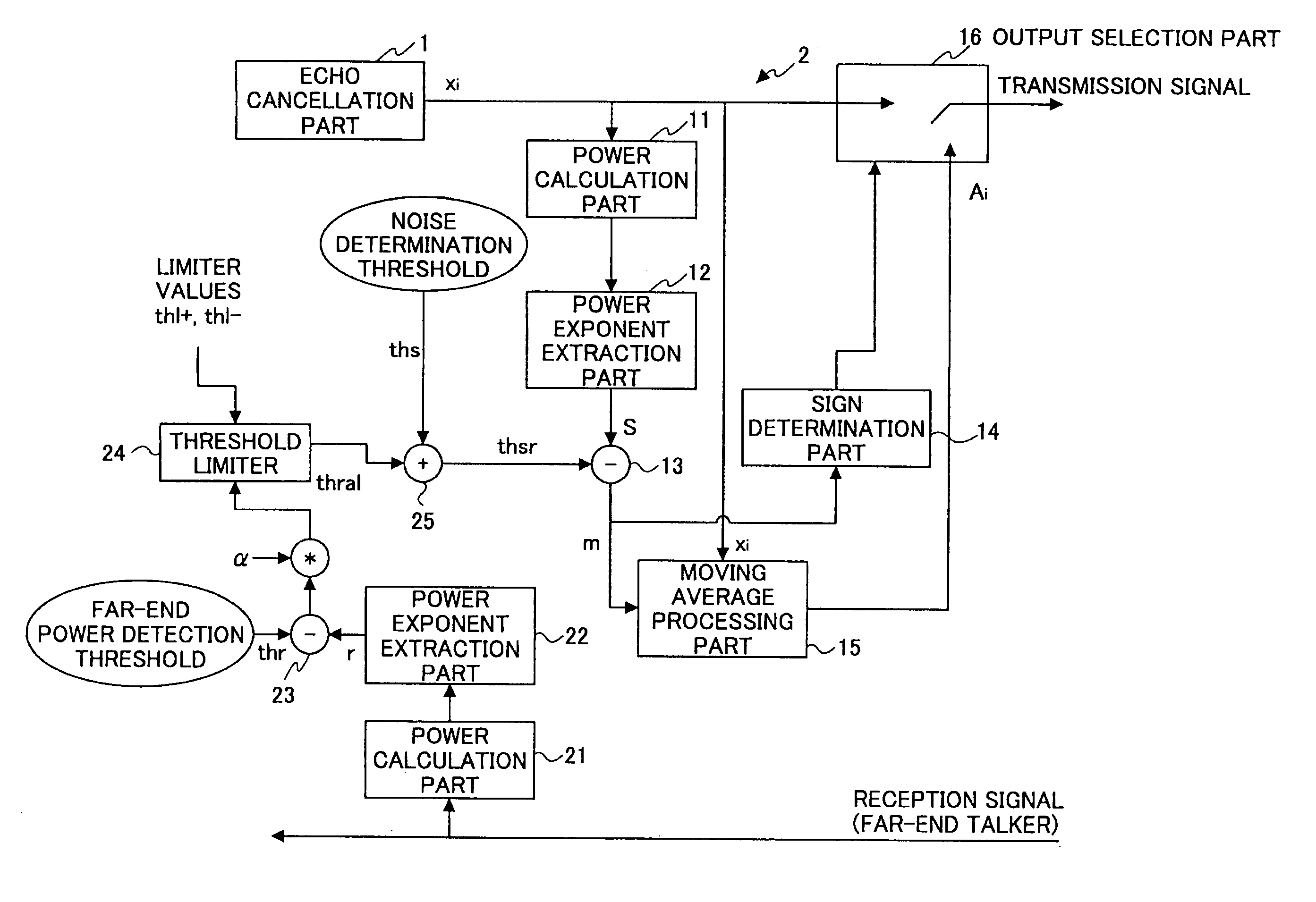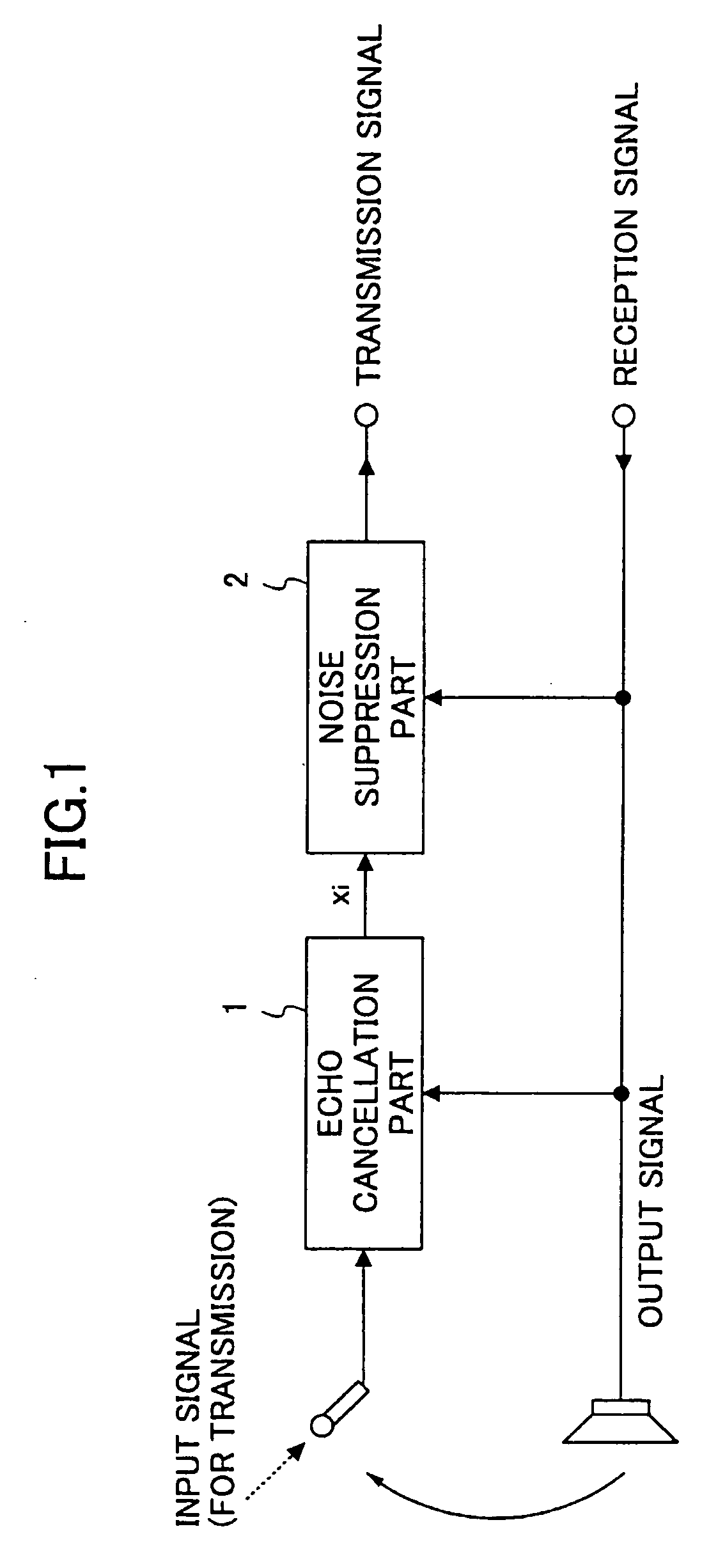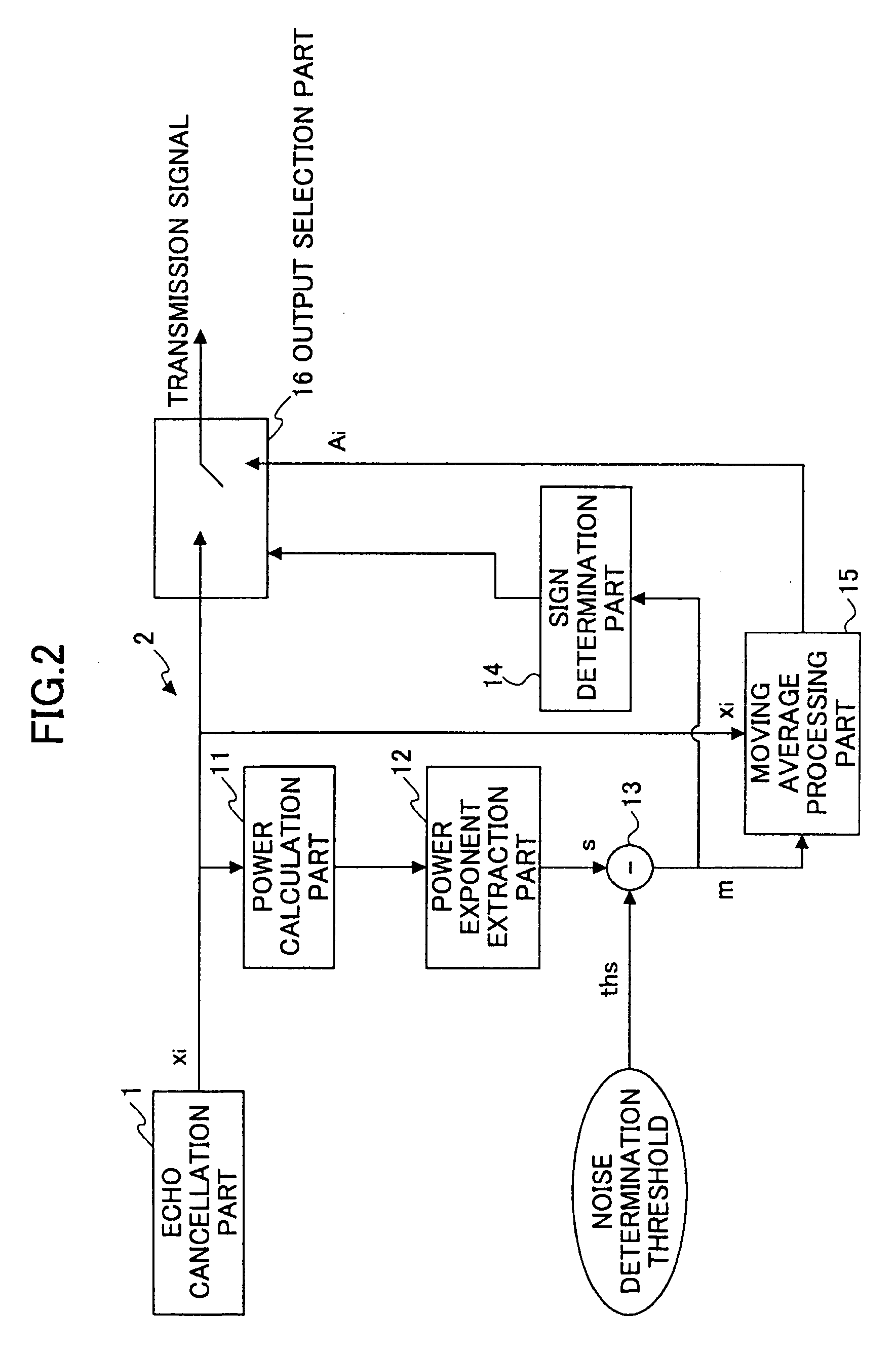Echo canceller ensuring further reduction in residual echo
- Summary
- Abstract
- Description
- Claims
- Application Information
AI Technical Summary
Benefits of technology
Problems solved by technology
Method used
Image
Examples
Embodiment Construction
[0032]A description will now be given, with reference to the accompanying drawings, of an embodiment of the present invention.
[0033]FIG. 1 is a diagram showing the configuration of an echo canceller according to the embodiment of the present invention. The echo canceller of FIG. 1 includes an echo cancellation part 1 and a noise suppression part 2. According to this configuration, a signal xi output from the echo cancellation part 1 is input to the noise suppression part 2.
[0034]The echo cancellation part 1 has the same function as the conventional echo canceller. That is, the echo cancellation part 1 has the function of canceling echo by first generating a pseudo echo by supplying a reception signal to a filter simulating an echo path and then applying a phase-inverted pseudo echo to an input signal. The echo cancellation part 1 further includes the double-talk function and the howling detection function in order to realize the hands-free communication function.
[0035]The noise supp...
PUM
 Login to View More
Login to View More Abstract
Description
Claims
Application Information
 Login to View More
Login to View More - R&D
- Intellectual Property
- Life Sciences
- Materials
- Tech Scout
- Unparalleled Data Quality
- Higher Quality Content
- 60% Fewer Hallucinations
Browse by: Latest US Patents, China's latest patents, Technical Efficacy Thesaurus, Application Domain, Technology Topic, Popular Technical Reports.
© 2025 PatSnap. All rights reserved.Legal|Privacy policy|Modern Slavery Act Transparency Statement|Sitemap|About US| Contact US: help@patsnap.com



